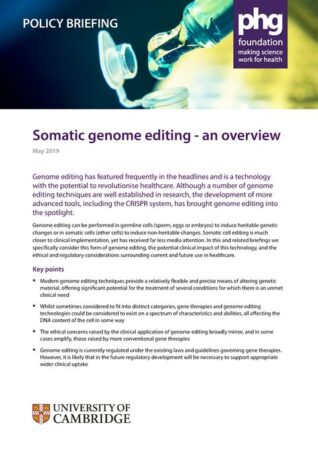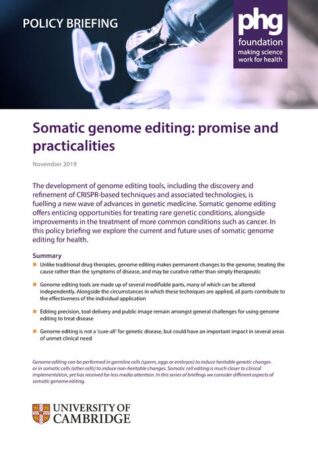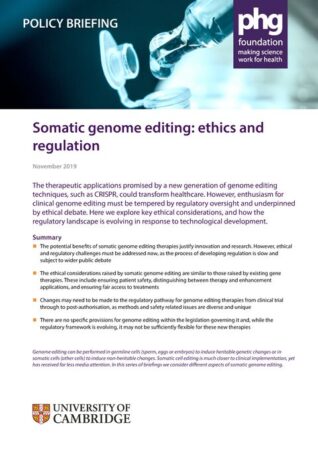Home Publications Policy briefings Somatic genome editing: an overview
Somatic genome editing
Clinical implementation, ethics and regulation
Genome editing has featured frequently in the headlines and is a technology with the potential to revolutionise healthcare.
Although a number of genome editing techniques are well established in research, the development of more advanced tools, including the CRISPR system, has brought genome editing into the spotlight.
Genome editing can be performed in germline cells (sperm, eggs or embryos) to induce heritable genetic changes or in somatic cells (other cells) to induce non-heritable changes. Somatic cell editing is much closer to clinical implementation, yet has received far less media attention.
In these three briefings we specifically consider this form of genome editing, the potential clinical impact of this technology, and the ethical and regulatory considerations surrounding current and future use in healthcare.



